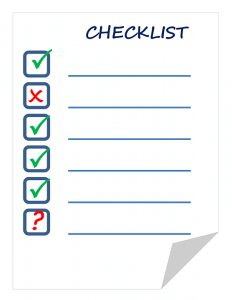When you are considering residency programs, one of the things to consider is the type of program in which you will be seeking. This includes evaluating how you will personally fit into a program, if you got along well with current residents in the program and whether or not you can see yourself their long-term. It is less about how programs rank and the reputation of the program. If it doesn’t feel right during your interview and other interactions with people in the program, then it shouldn’t appear on your rank order list.
 Beginning the Match process can seem overwhelming, especially after recently finishing the USMLE-2 exam. It seems like life is one whirlwind after another, and for the foreign medical graduate (FMG), there can be added stress in communication and logistics. With this may also come difficulty over Visa processing or difficulty getting ECFMG certification. It is not easy to maneuver life throughout your transition to PGY-1 (Post-graduate year 1), and one thing that can help is understanding how residency programs are set up. If nothing else, it clarifies a bit of the “mud” when you are trying to navigate the NRMP process.
Beginning the Match process can seem overwhelming, especially after recently finishing the USMLE-2 exam. It seems like life is one whirlwind after another, and for the foreign medical graduate (FMG), there can be added stress in communication and logistics. With this may also come difficulty over Visa processing or difficulty getting ECFMG certification. It is not easy to maneuver life throughout your transition to PGY-1 (Post-graduate year 1), and one thing that can help is understanding how residency programs are set up. If nothing else, it clarifies a bit of the “mud” when you are trying to navigate the NRMP process.
One thing you may not completely understand is the program types offered through the Match. There are 5 program types available, and they each specifically coded for your rank order list.
How are programs coded?
Each program has a 9-character code that is recognized by the rank order list computer algorithm when you create your list. The first four characters are the institution code. The next five to seven characters are the ACGME specialty code, and then comes the program type or letter. Last is the track number, which is typically zero unless there is more than one track in the program. If there are more tracks, they are listed sequentially.
 For example, anesthesiology programs at George Washington University – DC have the codes 1802040A0, 180204C0 and 1802040R0. Emergency medicine programs at the same university have the codes 1802110C0 and 1802110C1. The first four characters remain the same for the university. 1802 is the code for George Washington University – DC. The number 040 is the code for anesthesiology, while the number 110 is the code for emergency medicine. Anesthesiology offers three program types, advanced (A), categorical (C) and physician reserved (R). Emergency medicine only offers categorical (C). The anesthesiology programs only offer one track, while emergency medicine offers two tracks. The second track is an international track.
For example, anesthesiology programs at George Washington University – DC have the codes 1802040A0, 180204C0 and 1802040R0. Emergency medicine programs at the same university have the codes 1802110C0 and 1802110C1. The first four characters remain the same for the university. 1802 is the code for George Washington University – DC. The number 040 is the code for anesthesiology, while the number 110 is the code for emergency medicine. Anesthesiology offers three program types, advanced (A), categorical (C) and physician reserved (R). Emergency medicine only offers categorical (C). The anesthesiology programs only offer one track, while emergency medicine offers two tracks. The second track is an international track.
You may not think it is important to understand how the programs are coded, but understanding the codes can help you to avoid errors when choosing programs for your rank order list. It also helps to understand that there are different categories of programs for planning purposes. For example preliminary and advanced programs are meant to be ranked together but separately, as the advanced program will be on your primary rank order list, while the preliminary will be on your supplementary rank order list.
What are the categories?
There are five categories of programs, and they tell you what post-graduate year they will start in along with the level of training offered.
- Categorical (C).
If the program code has a C as its second to last character, it is categorical. This means it starts in PGY-1 (year one following medical school), and it offers full residency training. At the end of the program, a resident should be prepared for specialty board certification. Common categorical specialties are internal medicine, family medicine and neurological surgery. The length of categorical programs is 3 to 5 years.
- Primary (M).
Primary programs are very similar to categorical programs in that they begin in PGY-1 and prepare the resident for boards. What makes M programs different is that they focus on primary care in that specialty. For example, they may focus on primary care in internal medicine or pediatrics. These programs may only take 3 years.
- Preliminary (P).
Preliminary programs are to be coupled with Advanced programs (A). Common examples of preliminary programs are internal medicine and surgery. In P programs, the skill set learned is broader and covers a variety of disciplines in preparation for Advanced programs. They may take 1 or 2 years and begin in PGY-1.
- Advanced (A).
Advanced programs follow preliminary and complete the full course of training began during preliminary training. Examples of Advanced programs are anesthesiology or dermatology.
- Physician Reserved (R).
Physician reserved programs are advanced programs for physicians with graduate medical education. There are not many positions available in these programs, and they are for physicians that already have prerequisite resident training. These programs begin in PGY-1.
If you are beginning your journey to the Match, you may feel like it is a little premature to start figuring out the details of programs and how they are handled by NRMP to make sure your Match meets your needs and the needs of the program. However, there is a wealth of information and small details that can confuse the process if you aren’t adequately prepared. Casually studying these details will reduce the stress of the Match once it comes time for interviews and ranking.